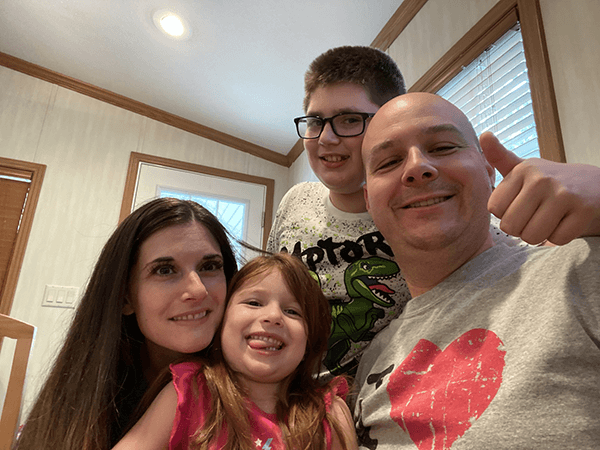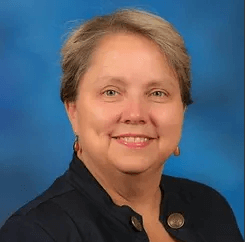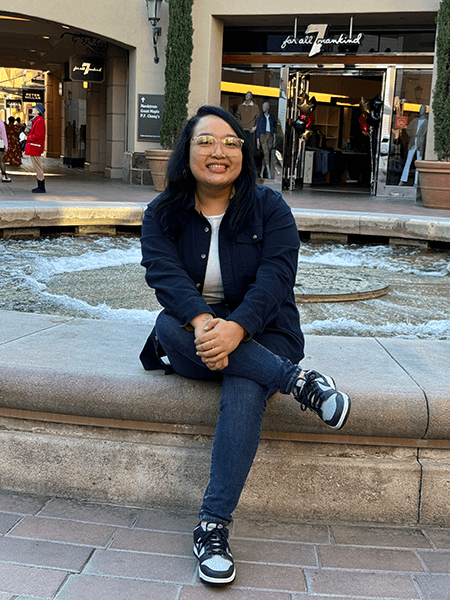Our “Meet the flok” series profiles the inherited conditions of protein metabolism that make up our diverse community: Classical Homocystinuria, Maple Syrup Urine Disease, Organic Acidemias, Phenylketonuria, Tyrosinemia, and Urea Cycle Disorders. Each article highlights personal stories of resilience and the efforts of advocacy leaders to support individuals facing each condition. We hope this series will educate, inspire, and unite our flok community in a shared mission to improve treatment for our rare conditions.
FAST FACTS:
|
| Cause The body cannot process the amino acid tyrosine causing a buildup of tyrosine and a toxic metabolite called succinylacetone in the blood |
| Prevalence <2,000 in the United States |
| Incidence 1 in every 200,000-300,000 births |
| Presenting Symptoms |
| Eye corneal crystals, jaundice Skeletal bone loss (rickets) Organ function renal and liver dysfunction/cancer, accumulation of peritoneal fluid Central Nervous System developmental delay, mood dysregulation |
| Treatment A low-protein diet, tyrosine and phenylalanine-free formula, and a medication to lower succinylacetone in the blood and prevent above symptoms |
| Additional information on tyrosinemia type 2 and type 3 |
Jon and Evan Miller
A Missed Diagnosis
When Jon and Amanda Miller welcomed their son Evan in 2009, doctors gave him a clean bill of health. In the following weeks, things took an unexpected turn: Evan was agitated, difficult to soothe, and only slept an hour at a time. His pediatrician assured them these were typical newborn behaviors. But by 12 weeks, Evan’s abdomen grew distended, and he developed an umbilical hernia. His doctor attributed the bloating to colic and gas. Jon and Amanda followed their gut and took Evan to the local hospital in New Jersey. Abdominal imaging revealed fluid throughout his abdomen– a highly unusual finding in a newborn. They transferred Evan to the regional medical facility for evaluation. The hospital specialists identified liver and renal dysfunction but were mystified by the cause; Evan had tested negative for Newborn Screening conditions at birth. Even without a definitive diagnosis, the doctors gave Evan a grim prognosis: he had only a few days to live.
Evan was urgently transferred again, this time to Children’s Hospital of Philadelphia where he underwent extensive tests. The medical team repeated the Newborn Screening and determined Evan had tyrosinemia type 1. Babies born with this ultra-rare condition cannot break down tyrosine, an amino acid in foods that contain protein, including the baby formula Evan had been drinking the past three months. He needed the medication nitisinone to reduce the build-up of toxins in his blood that were damaging his brain, liver, and kidneys. In 2009, the only available supply of the drug existed in a specialty pharmacy in Tennessee. With several hours of extensive coordination, the hospital finally received the medication and Evan began his healing journey.
After nearly a month in the hospital, doctors deemed Evan medically stable, but would not discharge him without a long-term plan for his costly drug. A one-month supply of nitisinone cost thousands of dollars, and it would take months to secure state medical coverage.
 Jon scoured the internet for resources, only to realize almost nothing existed for the tyrosinemia community. He found a website called “Joshua’s Cure” created by a North Carolina family whose son had tyrosinemia. Jon called the family directly and they encouraged him to contact the National Organization for Rare Disorders (NORD). NORD provided medication assistance and eventually became a lifelong collaborator in Jon’s professional advocacy work.
Jon scoured the internet for resources, only to realize almost nothing existed for the tyrosinemia community. He found a website called “Joshua’s Cure” created by a North Carolina family whose son had tyrosinemia. Jon called the family directly and they encouraged him to contact the National Organization for Rare Disorders (NORD). NORD provided medication assistance and eventually became a lifelong collaborator in Jon’s professional advocacy work.
A Call to Action
As Jon began to process Evan’s diagnosis, he created a Facebook support page for individuals with tyrosinemia and their caregivers. It became a vital forum for exchanging stories, offering emotional support, and seeking guidance. Its membership numbers grew, and soon Jon began to receive international inquiries. A father contacted Jon after his twin babies were diagnosed with tyrosinemia in India, where the medication was not commercially available. Jon made calls to the Red Cross, local members of congress, NORD, and Sobi (then the sole manufacturer of nitisinone) to send a supply of medication to the family. After initial pushback related to shipping concerns, the pharmaceutical company eventually agreed. A few days later the twins in India received their life-saving medication.
At the same time Jon was working on these global advocacy efforts, he tackled Newborn Screening protocols around the United States. Evan’s home state of New Jersey screened for tyrosinemia by assessing the amount of tyrosine in the blood; for those with the condition, the tyrosine value is very low at birth. The most effective biomarker for diagnosing tyrosinemia is succinylacetone, which 44 other states actively tested for. Jon pledged to push the other six states into compliance. He attended a Rare Disease Day celebration at the New Jersey State Senate House in 2011 and spoke publicly about Evan’s near-death experience. He shared his goal to improve Newborn Screening tests nationwide, and to support tyrosinemia patients on a global scale. Representatives from NORD and Sobi were in attendance and offered encouragement and support if Jon founded a non-profit to advance his goals for improved tyrosinemia care.
Within a week, Jon became the founder and president of the Network of Tyrosinemia Advocates (NOTA). He traveled to Washington, D.C. to the National Institute of Health conference and spoke to their advisory committee on Newborn Screening process improvements. Jon also attended Rare Disease Day celebrations in out-of-compliance states to urge their local legislatures into action. After nearly a decade of NOTA’s tireless advocacy, all 50 states now screen newborns for succinylacetone.
Jon continues to serve as a liaison between NORD, pharmaceutical companies, and countries without access to tyrosinemia care to support individuals born with the condition, often tackling legal and political barriers to drug shipment. His efforts have secured treatment for hundreds of international families whose children would otherwise have lost their lives.
Jon reflects on his and Amanda’s traumatic experience navigating Evan’s rare condition and how it became his life’s calling to change the terrain for others, “It wasn’t until this devastating diagnosis that we realized how strong and capable we really were, and that we could make a difference.”
The Work Continues: Research and Equal Access
Despite a life-limiting diagnosis given in the first few months of his life, Evan is thriving as a young teenager. Jon beams when describing his now 14-year-old son. “Evan’s funny, he’s smart. He plays drums in the school band and is really into aviation. He wants to be a pilot.”
Evan also has autism spectrum disorder, which Jon describes as one of the unknowns in terms of its relationship to tyrosinemia and a late diagnosis. Given the limited data that exists on tyrosinemia, it remains an important area for future research, as organizations like flok try to uncover insights about how metabolic conditions influence other areas of health, including neuropsychological function. Jon expresses optimism for continued research, understanding, and advancement of treatment options for tyrosinemia in Evan’s lifetime.
While Evan’s compliance with his low-protein diet and medical formula keep him healthy, Jon acknowledges the challenges a medical diet poses for many people both in daily management and cost. He encourages others to advocate for equal access to medical food – “Support the Medical Nutrition Equity Act. Call your senators.” Jon has proven that a community in action can create meaningful change.
Dr. Elizabeth Barnby
A Mother Steering Science
 As a Clinical Associate Professor in the College of Nursing at University of Alabama in Huntsville and President of the Tyrosinemia Society, Dr. Elizabeth Barnby is the one of the leading researchers and experts on tyrosinemia. The driving force? Both her son and daughter were born with tyrosinemia type 1. Now adults, her children were born before the national Recommended Uniform Screening Panel included tyrosinemia, and their diagnoses were missed. In addition to late detections, both children received liver transplants at young ages, as nitisinone – now the frontline drug therapy – was not yet available to treat the condition. At the time, Dr. Barnby worked as an emergency room nurse in Alabama. She decided to pursue a doctorate in nursing to elevate her understanding of tyrosinemia and steer future research to improve treatment for other children born with the condition.
As a Clinical Associate Professor in the College of Nursing at University of Alabama in Huntsville and President of the Tyrosinemia Society, Dr. Elizabeth Barnby is the one of the leading researchers and experts on tyrosinemia. The driving force? Both her son and daughter were born with tyrosinemia type 1. Now adults, her children were born before the national Recommended Uniform Screening Panel included tyrosinemia, and their diagnoses were missed. In addition to late detections, both children received liver transplants at young ages, as nitisinone – now the frontline drug therapy – was not yet available to treat the condition. At the time, Dr. Barnby worked as an emergency room nurse in Alabama. She decided to pursue a doctorate in nursing to elevate her understanding of tyrosinemia and steer future research to improve treatment for other children born with the condition.
Interested in the unknown neurocognitive impacts of tyrosinemia, Dr. Barnby designed multiple research studies examining executive function and social behavior. In one study of social behavior in mice with tyrosinemia type 1, her research team discovered that mice with this condition displayed abnormal behavior, and that their brains also contained more myelin. Dr. Barnby hopes to launch a new study that uses quantitative MRI of the brain in individuals with tyrosinemia to better understand the impact of increased myelination and its effects on learning and social behavior.
In addition to studying tyrosinemia’s expression in the brain, Dr. Barnby also emphasizes the need for further research on tyrosine blood levels. Tyrosinemia management requires a protein-restricted diet to maintain blood levels within a certain therapeutic range– a range that is not well-understood. She states, “We need better science to fully understand the dietary threshold. It’s important because diet impacts quality of life.”
To accelerate scientific innovation in the treatment of tyrosinemia, Dr. Barnby expresses the need for a centralized database that enables researchers to identify individuals to participate in clinical trials – a gap flok aims to fill with its community data platform. Given the low prevalence of tyrosinemia, there are still many unknowns about the condition that merit further study.
Global Advocacy Work
While continuing her academic research, Dr. Barnby became President of the Tyrosinemia Society, a foundation built to increase awareness, improve health outcomes, and advance research of the rare condition. Her work includes international fundraising, education, and diagnostic consultation in countries where tyrosinemia care is limited. She recounted a story of helping diagnose a newborn baby in the Philippines where medical providers were unfamiliar with the presenting symptoms of tyrosinemia. With her guidance the family secured medication and formula; their child is now four years old and continues to receive the treatment necessary to survive.
Dr. Barnby’s work also extends to the Society of Inherited Metabolic Disorders as a contributing member supporting worldwide advancement of medical treatment of tyrosinemia. Through her research, advocacy, and outreach, Dr. Barnby continues to improve the care landscape for the global tyrosinemia community.
Jamie Ma
Pursuing Her Dreams
Born in California in 1997, Jamie was hospitalized at six months old when her abdomen became swollen with fluid. After undergoing several tests, she received a diagnosis of tyrosinemia type 1; she was not screened at birth as California didn’t adopt a Newborn Screening test for tyrosinemia until several years later. Navigating a rare condition with complex dietary needs and limited support resources was even more difficult because Jamie’s family’s primary language is Chinese, and a translator was not consistently available. Jamie’s family understood a low-protein diet, medical formula, and medication were crucial for her health, and she received the necessary treatment to grow and develop normally. But it wasn’t until high school when Jamie gained a deeper understanding of the metabolic underpinnings of tyrosinemia and the consequences of elevated tyrosine levels in her blood. She became more selective about the foods she cooked and ate, and effectively lowered her blood levels.
 While following a protein-restricted diet meant Jamie couldn’t eat the same foods as other kids at school, she felt tremendous support from her family, friends, and teachers – “Everyone I surrounded myself with knew I had tyrosinemia and never treated me differently; they respected me for who I was.”
While following a protein-restricted diet meant Jamie couldn’t eat the same foods as other kids at school, she felt tremendous support from her family, friends, and teachers – “Everyone I surrounded myself with knew I had tyrosinemia and never treated me differently; they respected me for who I was.”
Jamie recalls a doctor telling her she might have difficulty learning in school, given the literature on tyrosinemia’s effects on the brain. Despite his forecast, she took advanced placement and International Baccalaureate courses and graduated with a 3.8 GPA, while also playing basketball, tennis, and swimming on her school teams. Jamie went on to attend California State University, Los Angeles for both her ungraduated degree and Master’s in Nutritional Science. She is currently working through her clinical practicum to become a registered dietitian. Jamie plans to one day work in pediatrics and help children navigate metabolic conditions like hers.
Using Her Voice
Reflecting on her success given the doctor’s concern about potential learning delay, Jamie shares, “I never experienced that struggle, which is a blessing.” Now 26, Jamie is a vocal advocate for the tyrosinemia community, sharing her personal story and supporting families grappling with a rare diagnosis. She encourages parents, “Be supportive of your kids, and break it down for them to understand as early as you can. The sooner they understand the condition, the better they can manage it themselves, gain confidence, and have a more positive outlook on life.”
In 2017 Jamie attended a Network of Tyrosinemia Advocates (NOTA) event in Texas and in 2022 made an educational video on life with Tyrosinemia for Cycle Pharmaceuticals – a manufacturer of nitisinone. She hopes that sharing her experience will reassure parents that while the condition requires dietary and medical management, it’s a “lifestyle” and you can still flourish. Jamie remains optimistic for continued research on tyrosinemia, and one day a cure.



